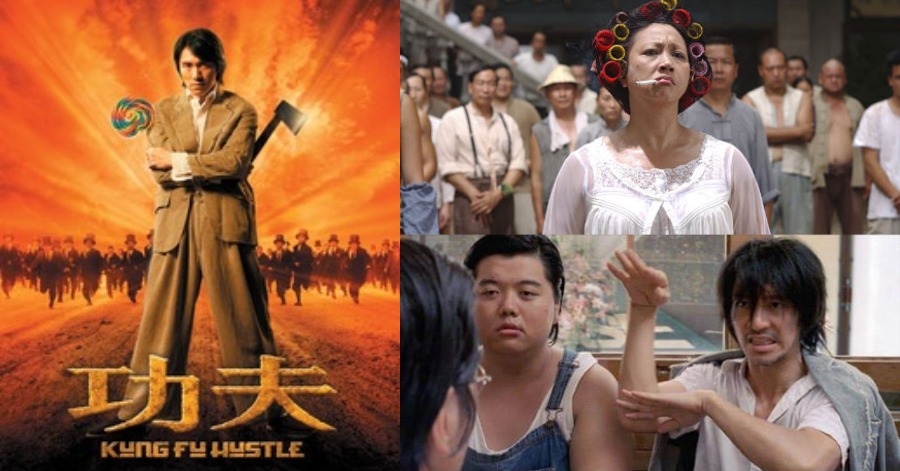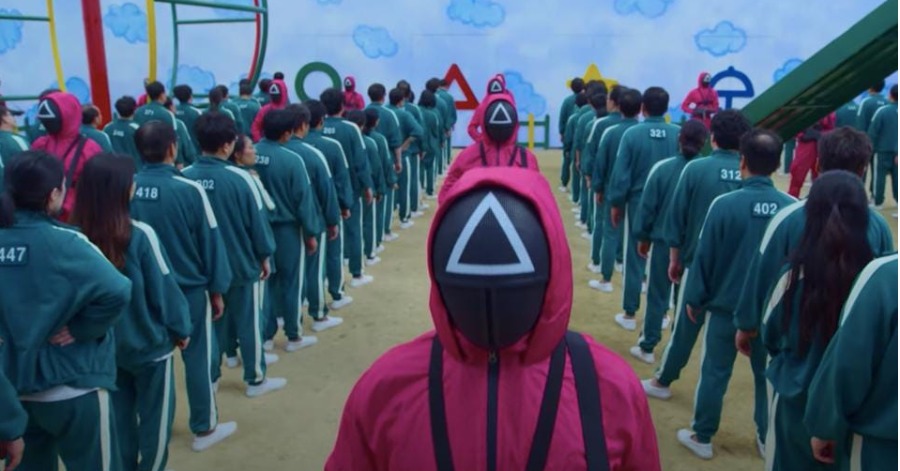Kung Fu Hustle is actually a 2004 action-comedy movie directed, produced, co-written by, and starring Stephen Chow. The movie tells the story of a murderous neighborhood gang, a poor village with unlikely heroes, and also an aspiring gangster’s fierce journey to find his true self. Eva Huang, Yuen Wah, Yuen Qiu, Danny Chan Kwok-kwan and Leung Siu-lung co-starred in prominent roles. The martial arts choreography is supervised by Yuen Woo-ping.
This movie is not just an action-comedy movie. It is a beautiful story that beholds a lot of complex emotions from the beginning to the end. Sing, a young boy, gets beaten up by some bullies for trying to stop them from snatching a girl’s candy. Confused, sad Sing thinks that bad guys always win, so then he decides to go off the rails and aspires to be a gangster by joining the Axe Gang. Somehow, after multiple failed attempts, he manages to join the gang along with his friend. As Axe Gang member, he eventually gets to know the dangers and life-threatening risks his job possesses.
For those who might not know, a lot of the martial art scenes in this particular movie comes from and also bring their own references towards the movie. To know more about it, these are actually the references used in Kung Fu Hustle.
1) The Pigsty Alley
The Pigsty Alley is also called Pig Cage Walled City in Chinese. This is actually a reference to Kowloon Walled City. An ungoverned, lawless slum in Hong Kong. ‘Pig Cage’ is actually a pun referencing the inhumane condition inside. Kowloon Walled City had since been demolished. So, in a way, this scenery also feels quite nostalgic to a lot of people in Hong Kong.
2) The Kick Master, Coolie
This character uses a form of Kung Fu called ‘Tan Tui’. Specifically, the ‘Twelve Kick’ variant was passed down by folk hero Huo Yuanjia. There is actually a 1979 movie made about it starring Bruce Leung who is also in this movie.
3) Buddha’s Palm
After the failed extortion, Sing reminisces about that time he got duped by a beggar into buying a Kung Fu manual for Buddha’s Palm. The trope of a Kung Fu beggar is actually based on a real person named So Chan. It’s a folk hero Stephen Chow played in King of Beggars. However, in Kung Fu Hustle movie, the beggar is likely a reference to a fictional wuxia character name Hong Qi Gong. Created by the most defining wuxia writer of all time, Jin Yong. Buddha’s Palm, in particular first appeared in a series of Taiwanese novels in the 60s. It was then popularized by a movie serial adaptation and its bigger budget remake.
4) Two Assassins From The Axe Group
The two assassins from the axe group are famous for their deadly instruments. It was actually popularized in Hong Kong by the wuxia novel called Deadful Melody. It got adapted into movies a handful of times. The Chinese title literally means the Six-Fingered Demon Musician. Presumably, the musician was later killed by Inigo Montoya.
5) Lion’s Roar
This move is a fictional martial art, also from a Jin Yong novel called The Heaven Sword and Dragon Sabre. Combined with the character’s domestic violence, this also references a Chinese folktale called The Roaring Lioness of East Bank. It is a comedic story about a scholar with a very strict wife. With inspirations from so many classic stories, no wonder the landlady is such a memorable character.
Sources: YouTube Accented Cinema.









Leave a Comment